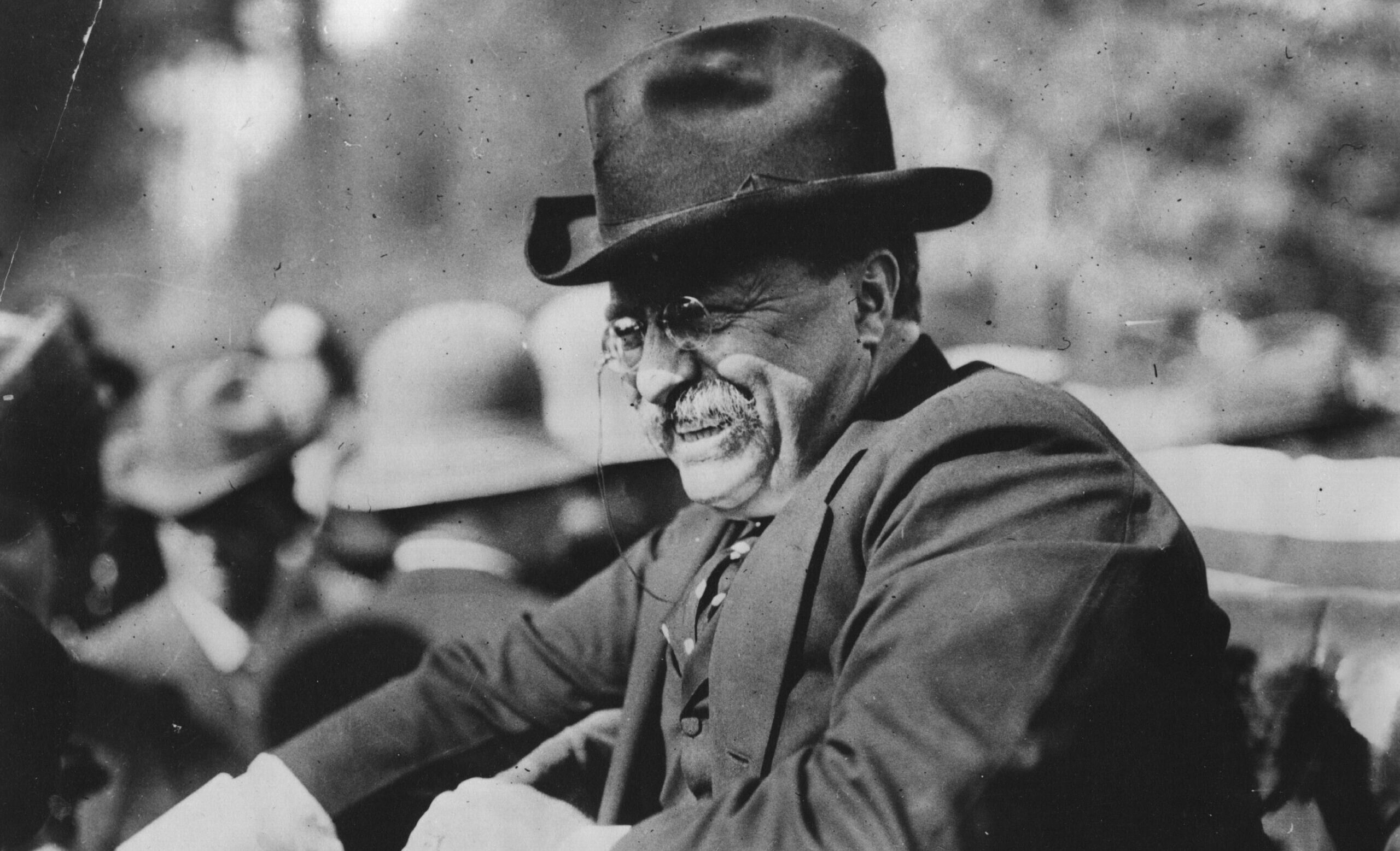Progressivism: The Strange History of a Radical Idea
By Bradley C. S. Watson
(University of Notre Dame Press, 2020)
Thomas Jefferson’s first inaugural address is best known for the locution “We are all Republicans, we are all Federalists.” Jefferson preceded this call for unity, however, with a more profound observation: “Every difference of opinion is not a difference of principle. We have called by different names brethren of the same principle.”
That Jefferson would call his Federalist opponents “brethren of the same principle” is startling, since he referred to them as “monocrats,” “anti-republicans,” “rogues,” and “witches” during his predecessor’s administration. As part of the opposition in 1798, Jefferson seemed convinced that he and his opponents were divided over fundamental principles. As the nation’s chief executive in 1801, he observed a unity of principle and a nation divided only by opinions.
To reconcile himself to himself, Jefferson employed a useful metaphor in a letter to John Dickinson written a few months after his inauguration. He argued that it was “very important that the pure federalist and republican should see in the opinion of each other but a shade of his own.” In their political views, Federalists and Republicans were just shades of the same color.
Jefferson’s scheme for distinguishing those within a common political tradition from those outside the tradition is effective only if there is a way to distinguish differences of opinion from differences of principle. Any attempt to distinguish the two is fraught with difficulty and ambiguity. As debates about Jefferson’s own legacy indicate, this is an exercise in which historians, political theorists, and politicians have been engaged for centuries. If America has a tradition that emerged from its Founding, one must situate one’s arguments within that tradition rather than outside it to receive a sympathetic audience. Appealing to political principles that are alien to the Founders’ Constitution is tantamount to weakening one’s argument.
This tension is at the heart of Bradley C. S. Watson’s book on historians who interpreted the principles and aims of progressive reformers in the early twentieth century. In Progressivism: The Strange History of a Radical Idea, Watson surveys the assessments of historians between 1920 and 1980 and finds a “complicity of understatement” about progressivism’s break with the American constitutional tradition. Where Watson and others perceive a vast difference of principle between the Founders and the progressives, these historians saw only minor shades of difference. Watson implies that the progressive historians’ biases influenced their interpretations. Because they were themselves progressives, they refused to address the open hostility that early twentieth-century progressives displayed to the principles of the Founding and the Constitution.
Part historiography, part intellectual history, Watson’s book provides a thorough and fascinating explanation of how and why scholars have only recently uncovered the depth of disagreement between the progressives and the American Founders. Whether that was a difference of opinion or of principle, however, is a question that begs for further investigation.
Watson’s argument occurs in three phases. First, in order to demonstrate that historians have engaged in a “complicity of understatement,” Watson must establish that progressivism broke with the tradition established at the Founding. This is the thrust of the first two chapters, which offer a novel interpretation of American progressivism that builds upon Watson’s earlier scholarship.
Watson starts by arguing that progressivism rejected the very notions of permanent principles, modest governmental power, and even a fixed Constitution. Blending social Darwinism and pragmatism, progressivism relied on a new understanding of history that embraced change and evolution for its own sake, directed by experts who apply scientific method to solve social problems.
In addition to this standard account of progressivism, Watson adds a less appreciated dimension: the religious fervor that animated many American progressives. “A reconstituted worldly Christianity,” he writes, “called for the expansion of the state in the name of moral and theological progress.” Religious progressives focused on social salvation rather than individual salvation, breaking from orthodoxy and providing a normative basis for social solidarity that purely scientific approaches lacked. The turn to this goal in both Protestant and Catholic circles provided a spiritual basis for American progressivism.
The combination of social Darwinism, pragmatism, and the Social Gospel, Watson asserts, amounted to a fundamental shift away from the principles of the Founding. Yet the historians who came after the Progressive Era told their audiences that there was “nothing to see here.”
The next phase of Watson’s argument contains his core thesis about scholars who wrote about progressivism between 1920 and 1980. They emphasized the continuity of a liberal tradition that ran from America’s Founding through the Progressive Era. In their telling, the progressive movement was a humanitarian, economic, and ultimately superficial project led by upper-class intellectuals who feared their loss of influence in a society dominated by urbanization and industrialization. Some historians even concluded that progressives were actually conservative because they did not go as far as the socialists. None of the historians entertained the notion that progressivism was “a fundamental rejection of the founders’ Constitution . . . a new form of secular millenarianism with enduring regime-level implications.”
The chapters in which Watson surveys the progressive historians are the highlight of the book. Watson meticulously combs through decades of historical literature and convincingly demonstrates its shortcomings. Although these histories were written by intellectual giants such as Louis Hartz, Henry Steele Commager, Richard Hofstadter, and Arthur Schlesinger Jr., they failed to acknowledge the most important question posed by the progressive movement: Does modern government necessitate a repudiation of the American Founding?
Though Watson is generally correct about their failures, some of the authors he studies acknowledged the tensions. He observes that Commager connected progressivism to the inadequacy of the Declaration of Independence, the Constitution, and the natural law that served as their foundation. He further notes that Hofstadter and Charles Beard advanced a novel, psychological account of the Philadelphia Convention that amounted to a “new thesis on the American Constitution.” In short, some of these historians appear to acknowledge the break progressivism made from the earlier tradition.
Still, the evidence is mostly on Watson’s side. Progressive historians, whether because they wanted to cast their subject in the most favorable light or because they were confused by the differences of opinion that divided particular progressives, “tended to defang progressive ideas and arguments, making them appear more compatible with the American experience and constitutional order than they in fact were.” Traversing a litany of books written in the middle of the twentieth century, Watson provides ample evidence that the Founders and the progressives operated in two coherent traditions that were at odds with each other. It is hard to disagree with his thesis that most historians elided these differences.
Is objectivity merely consensus?
Had historians been more willing to engage progressivism at a philosophical level, the extent of its rejection of the Founding would be better understood. Instead, it has been left primarily (but not exclusively) to political scientists and political theorists to pick up the slack. In the third and final phase of his argument, Watson describes the revisionist counterattack launched primarily from political scientists and theorists associated with the “Claremont school.” This school, first led by Harry Jaffa, carefully traced the intellectual arguments of the progressives and noted their hostility and challenge to “the American constitutional order.” Although the work of this intellectual movement is well known, Watson provides a helpful overview of the literature and arguments it has produced.
Watson concludes with a question: How can we account for “the weaponization of American history since the 1940s”? His view is that historians ultimately abandoned the notion of objectivity, retreating to “mere consensus rather than truth.” What was true, historians eventually concluded, was what professionalized historians could agree upon. This led to intellectual homogeneity among generations of professionalized and bureaucratized historians. “In other words,” Watson writes, “professional American historians were, in various ways, thoroughly progressive from the get-go.” Whether their blindness was willful or simply the product of their training is unclear in Watson’s account, but their inability to grasp the differences of principle that separated progressives and the American Founding was endemic.
Although it reads at times like an extended literature review, Watson’s survey of the failures of progressive historians is an important contribution both to the study of progressivism itself and to understanding why it has only recently come into focus as an important period in American history. Nevertheless, his account raises further questions that the Claremont school needs to address.
The most significant of these is prompted by the progressives’ own understanding of what they were doing. As Watson frequently observes, many of them connected their ideas to the “Jeffersonian” and “Hamiltonian” traditions in American political thought. The former stood for democracy while the latter stood for nationalism. These two traditions were at odds during the early republic, but progressives such as Herbert Croly thought they could be amalgamated into a new democratic nationalism. Others identified more strongly with one or the other tradition. During the 1912 presidential contest, for example, rival progressive candidates Woodrow Wilson and Theodore Roosevelt and their allies aligned on opposite sides. Wilson routinely asked, “What Would Jefferson Do?” on the campaign trail. Roosevelt’s philosophy was sometimes called “Neo-Hamiltonian.”
In the progressives’ view, the important debate in American politics was not Jefferson and Hamilton together opposing Wilson and Roosevelt, but Jefferson and Wilson versus Hamilton and Roosevelt. Was their characterization simply wrong, and is the Claremont school’s right? Or is the real debate in American political thought not “Founders versus Progressives” but “Jeffersonians versus Hamiltonians”? This alternative framing suggests that, instead of a conflict between the Founding and an alien tradition, American politics is the product of a tension between alternative strains within the Founding tradition itself. Had Watson explored this question more thoroughly, his core thesis that the historians missed progressivism’s hostility to the Founding would be more persuasive.
The second unanswered question prompted by Watson’s survey is whether there was enough unity within the progressive movement to talk about it as a coherent political theory. As the division between Jeffersonians and Hamiltonians suggests, progressives were not of one mind.
One of the most fascinating elements of the historians’ treatment of progressivism is the disagreement they identified within the movement. Progressive historians emphasized not only the divisions that prevailed during the Progressive Era but also the New Deal’s departure from older progressive principles. Hofstadter’s Age of Reform called the New Deal a sharp break from progressivism. Others such as Russell Nye repeated Hofstadter’s characterization. Whereas the Claremont school understands the New Deal as a direct outgrowth of progressivism, the historians tended to draw a sharp distinction between them. Watson’s argument that progressivism both broke with the American Founding and was an influential force in twentieth-century American politics rests on the connection between progressivism and the New Deal. Yet he never fully confronts the historians’ claim that the New Deal departed from progressivism. Again, his case would be made more convincing by exploring this question.
Watson argues persuasively that progressive historians failed to describe the most important and fundamental aspects of progressivism. Their views raise challenges, however—such as the extent of progressives’ disagreement with the American Founders and with each other—that neither Watson nor the Claremont school has adequately answered. Historians will likely not find the Founders-versus-progressives dichotomy compelling until these questions are confronted squarely.
Joseph Postell is associate professor of political science at the University of Colorado–Colorado Springs and the author of Bureaucracy in America: The Administrative State’s Challenge to Constitutional Government.













